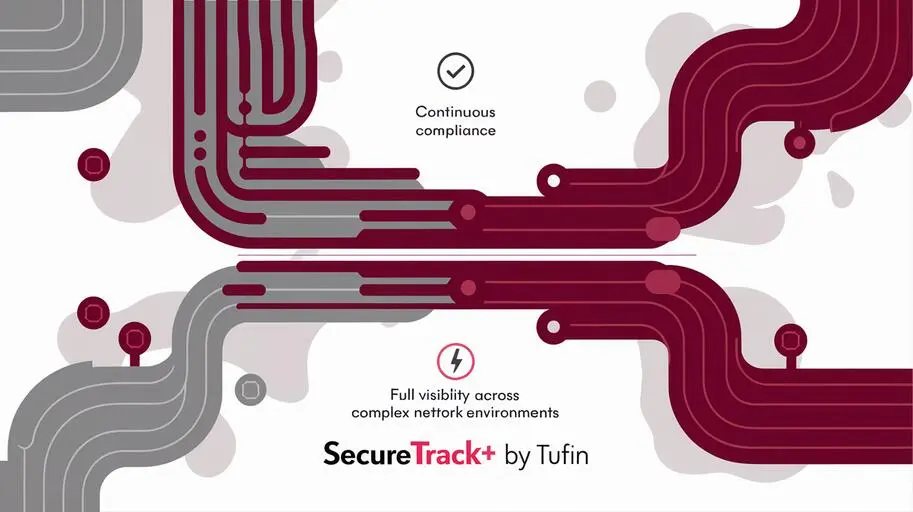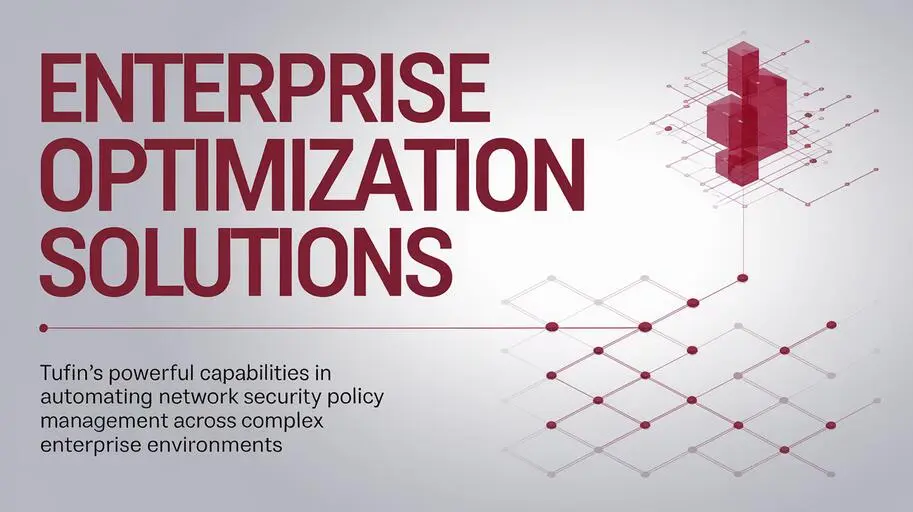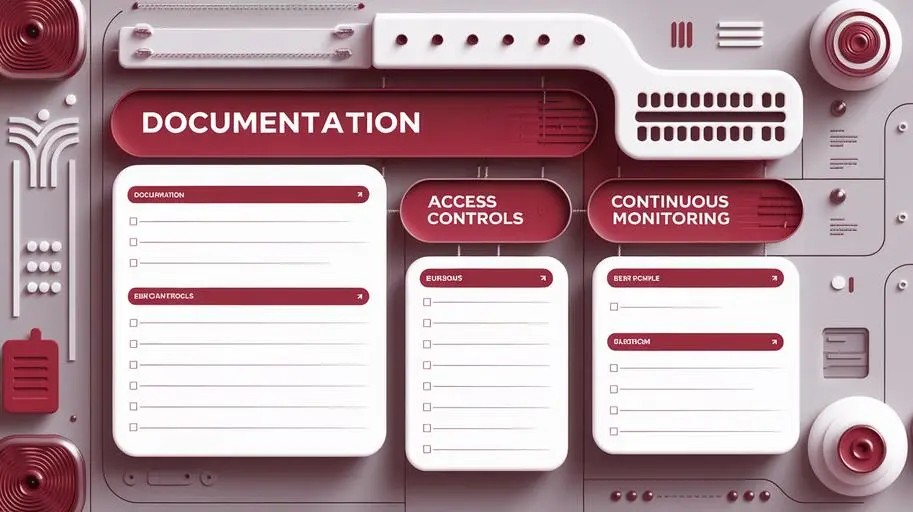
Modern organizations face unprecedented challenges in the field of network security. Constantly changing threats, increasing regulatory requirements, and infrastructure complexity challenge technical specialists to ensure reliable protection of critical assets. How to ensure compliance, quickly identify vulnerabilities, and effectively manage security policies? The solution is Tufin, a platform that automates audit and reporting processes, providing significantly improved control and visibility of your network infrastructure.
Why Auditing and Reporting with Tufin is a Necessity?
Automating audit and reporting with Tufin is not just an improvement in operational efficiency; it’s a significant enhancement to the approach to managing network security. Consider the key benefits that Tufin provides to organizations.
Complexity of Modern Network Environments
Modern networks are complex, dynamic ecosystems consisting of firewalls, routers, cloud platforms, and many other components. Managing firewall rules, monitoring configuration changes, and ensuring PCI DSS, HIPAA, and other regulatory compliance is a laborious and error-prone process.
Risks of Manual Management
Manual management of security policies and generation of reports is fraught with human errors, inconsistencies, and delays. For example, incorrect rule configuration can lead to opening a port for unauthorized access, and the inability to quickly roll back changes after a problem is detected can cause prolonged downtime. This increases the risk of security policy violations, non-compliance with regulatory requirements, and, as a result, financial losses and reputational damage.
Benefits of Automation with Tufin
Tufin Security Suite offers a comprehensive solution for security automation, allowing you to:
- Automate audit and reporting processes, reducing the time and costs to perform these tasks.
- Ensure compliance with PCI DSS, HIPAA, SOX, and other regulatory requirements.
- Improve visibility of network topology and security policies, making it easier to identify and eliminate vulnerabilities.
- Automate change management, reducing the risk of errors and failures.
- Integrate with existing SIEM, IDS/IPS systems, and other security tools such as Splunk, QRadar, and ArcSight, using Syslog and API protocols to transmit data about events and configurations. For example, Tufin can send information about blocked traffic, changes in firewall rules, and detected vulnerabilities to the SIEM system for further analysis and response.
Deep Dive into Tufin Functionality for Auditing and Reporting
Tufin provides a wide range of features designed to automate network security auditing and manage compliance. Let’s consider the most important of them.
Automated Audit of Network Infrastructure
Tufin SecureTrack continuously monitors the configuration of firewalls, routers, and other network devices such as Cisco, Check Point, Fortinet, AWS Security Groups, and Azure NSGs, providing up-to-date information about security policies and firewall rules. Data is collected via SSH and API protocols. SecureTrack collects data on rules, objects, and policies. Data collection can be configured on a schedule, for example, every 15 minutes.
This allows you to quickly identify security policy violations, anomalies, and other potential problems.
Generating Compliance Reports
Automated reporting is a key feature of Tufin. The platform provides report templates for various standards, such as PCI DSS, HIPAA, SOX, and others. Examples of information in reports: a list of non-compliant rules and vulnerabilities identified in the configuration. Reports provide detailed information about the status of network security, identified vulnerabilities, and measures taken to address them. This greatly simplifies the compliance audit process and reduces the labor costs of preparing reports.
Security Risk Analysis
Tufin allows you to conduct security risk analysis based on information about network topology, security policies, and identified vulnerabilities. Risk prioritization is determined based on a combination of factors such as asset criticality, likelihood of vulnerability exploitation, and potential business impact. For example, the platform may recommend immediately closing a port open to public access to a critical server or changing unsafe firewall rules. The platform identifies high-priority risks and provides recommendations for addressing them. This helps organizations focus their efforts on protecting the most critical assets.
Network Topology Visualization
Network topology visualization with Tufin provides a visual representation of the network structure, connections between devices, and security policies applied to different network segments. You can filter and search for devices on the network map using various criteria, such as device type, location, or security status. This facilitates understanding the complex network infrastructure and simplifies the identification of potential vulnerabilities.

Technical Details and Practical Aspects of Using Tufin
For technical specialists, it is important to understand the architecture of the Tufin solution, the features of its configuration, and the possibilities of integration with other security systems.
Tufin Architecture
Tufin Security Suite consists of several key components:
- Tufin SecureTrack: A centralized repository of data about network topology, security policies, and firewall rules. The data is stored in a PostgreSQL database.
- Tufin SecureChange: A module for automating change management, allowing you to automate the process of making changes to security policies.
- Tufin SecureApp: A module for managing *application microsegmentation* and application-level security policies.
The platform supports various deployment types, including on-premise and cloud. It is scalable and fault-tolerant, which ensures reliable operation even in large and complex network environments.
Configuring Tufin
Configuring Tufin includes the following steps:
- Installing and configuring Tufin SecureTrack.
- Connecting firewalls, routers, and other network devices to Tufin SecureTrack. Cisco, Check Point, Fortinet, AWS Security Groups, Azure NSGs, and other devices are supported.
- Configuring correlation rules to identify security policy violations and anomalies. For example, a correlation rule can identify situations where traffic from an unauthorized network attempts to access critical servers.
- Configuring report templates for automatically generating reports on compliance.
The Tufin user interface is intuitive and easy to use, which facilitates the process of configuring and managing the platform. You can also use CLI commands and APIs to automate security processes.
Integration with SIEM Systems and Other Security Tools
Integration of Tufin with SIEM systems, IDS/IPS, and other security tools allows you to create a comprehensive network protection system. Tufin can send logs and notifications to SIEM systems, such as Splunk, QRadar, and ArcSight, using Syslog and API protocols, which allows you to quickly identify and respond to security incidents.
Solving Specific Problems with Tufin
Tufin effectively solves a number of common problems faced by network security specialists.
Security Policy Management in a Hybrid Environment
In hybrid environments consisting of on-premises and cloud platforms, managing security policies becomes especially difficult. Tufin allows you to centrally manage security policies in a hybrid environment, ensuring consistency and compliance. Tufin ensures policy consistency by defining common security policies that apply to both on-premises and cloud environments. Automatic policy synchronization between on-premises and cloud environments is not always possible and depends on specific technologies and configurations.
Compliance with PCI DSS and HIPAA
Tufin simplifies the process of complying with PCI DSS and HIPAA, providing report templates, *automatic detection of security policy violations*, and tools for data analysis. For example, Tufin provides report templates that show compliance with PCI DSS requirements, such as checking firewall rules to protect card data. Tufin automates checks required by PCI DSS, such as checking firewall rules to restrict access to credit card data and checking for encryption to protect sensitive data. This allows organizations to reduce the time and costs of meeting these requirements and avoid non-compliance penalties.
Change Automation
Tufin automates the change management process, which reduces the risk of errors and failures. The platform provides automatic validation of changes for compliance with security policies and provides tools for approving changes. The automated validation process includes analyzing proposed changes for compliance with existing security policies and regulatory requirements. Change approval occurs through a workflow involving multiple users, where each user can approve, reject, or request additional information about the change. Rollback of changes can be performed automatically or manually, depending on the settings.
Removing Redundant Firewall Rules
Over time, a large number of firewall rules accumulate in firewalls, many of which become redundant or obsolete. *Tufin* allows you to identify and remove redundant firewall rules, which improves the performance of firewalls and improves network security. Tufin identifies redundant rules based on criteria such as rules that have not been used for a certain period of time (for example, 90 days) or rules that overlap with other rules. Before deleting a rule, Tufin warns the administrator and provides information about the potential impact of deleting the rule.
Key Benefits of Tufin: Significantly Improved Control and Confidence in Security
In conclusion, Tufin is a powerful platform that provides organizations with significantly improved control over their network security. The platform automates security processes, ensures compliance, and provides tools for security risk analysis. This helps organizations reduce the risk of security policy violations, increase operational efficiency, and ensure reliable protection of critical assets. Thanks to its comprehensive approach to security policy management and deep integration with existing systems, Tufin becomes an indispensable tool for modern network security specialists.
Ensure reliable protection of your network infrastructure. Find out how Tufin can help your organization. Contact us for a personalized consultation and demonstration.
FAQs about: Auditing and Reporting with Tufin
-
What is Tufin and what problem does it solve?
Tufin is a platform that automates auditing and reporting processes in network security, providing complete control over the network infrastructure. It solves problems related to constantly changing threats, growing regulatory requirements, and the complexity of the network infrastructure.
-
What are the key benefits of automating auditing and reporting with Tufin?
Automation with Tufin reduces the time and costs of auditing and reporting, ensures compliance with standards, improves visibility of network topology and security policies, automates change management, and integrates with existing security systems.
-
What are the main Tufin functions used for auditing and reporting?
The main functions include automated network infrastructure auditing, generation of compliance reports, security risk analysis, and network topology visualization.
-
What are the key components of Tufin Security Suite?
Tufin Security Suite consists of Tufin SecureTrack (centralized data repository), Tufin SecureChange (module for automating change management), and Tufin SecureApp (module for managing security policies at the application level).
-
How is Tufin configured?
Configuration includes installing and configuring Tufin SecureTrack, connecting network devices, configuring correlation rules for detecting violations, and configuring report templates.
-
With which systems can Tufin be integrated?
Tufin integrates with SIEM systems, IDS/IPS, and other security tools, creating a comprehensive network security system.
-
How does Tufin solve the problem of security policy management in a hybrid environment?
Tufin allows you to centrally manage security policies in a hybrid environment, ensuring consistency and compliance.
-
How does Tufin help comply with PCI DSS and HIPAA requirements?
Tufin simplifies the compliance process by providing report templates, automatic violation detection, and tools for data analysis.
-
How does Tufin automate change management?
Tufin automates the change management process, providing automatic change verification for compliance with security policies and providing tools for change approval.
-
How does Tufin help remove redundant firewall rules?
Tufin allows you to identify and remove redundant firewall rules, which improves firewall performance and enhances network security.















